Fire safety now permeates public dialogue, heightened notably after the Grenfell tragedy of 2017. What was once an article heading at the back of a facilities management journal, is now headline news on a regular basis.
Recent events have forced a collective reflection on how such catastrophes can occur. Human negligence has been identified in many instances as a contributing factor. This only compounds a systemic lack of compliance and ignorance of fire safety measures.
This on going reflection has prompted a sweeping re-evaluation of fire safety standards, including the key role played by fire doors and their hardware. 2023 has seen an unprecedented level of regulatory reform such as the Fire Safety (England) Regulations.
In order to mitigate risks in new builds and the vast array of older, historic buildings throughout the UK, what more needs to be done to radically improve fire door safety standards so lives aren’t continually on the line?
In light of recent regulatory reform, and with more on the horizon, we take a look at the life-critical role played by fire door sets and discuss the importance of installing and maintaining quality fire doors.
Active and Passive Fire Protection: A Pressing Concern
Recent studies by Inside Housing have revealed that only 18.9% of high-rise social housing is equipped with sprinklers and a mere 12% have fire alarms.
Read that again.
Not even 20%, one-fifth of social housing has sprinklers – a vital active fire protection measure. And a pitiful 12% with fire alarms. Is it any wonder that passive measures are poorly installed or maintained, if they’re in place at all, when well-known and accepted active fire measures are lacking?
Whilst it has been long acknowledged that active fire protection is crucial, so too is passive fire protection. As explained by the HSE, it is sometimes an alternative to active systems but usually supplements them within the built environment.
This is where fire doors come in.
Alongside other structural compartmentation elements including fire walls, floors, ducts, and ceilings, fire doors and their hardware provide an effective barrier to the spread of fire, smoke, and gasses.
Surveys from over 100,000 FDIS inspections in 2019 indicated that 76% of fire doors were declared unfit for purpose. Combine this with substandard levels of active fire protection measures, and it is no wonder the UK is suffering from an on-going fire safety pandemic.
Such inadequacies in public and private establishments risk lives and should not be ignored.
Fire Safety Legislation: A Transformative Landscape
The last couple of years have seen pivotal changes, including the implementation of the Fire Safety Act plus the Fire Safety (England) Regulations in January 2023. This follows the Phase 1 report of the Grenfell Tower Inquiry, with further guidance coming into force in October.
Section 156 of the Building Safety Act 2022 (BSA) is the third phase of the Home Office’s fire safety reform program. These developments obligate duty holders to adhere to stringent quality and maintenance standards for fire doors in FSO-regulated premises. It also encompasses the availability and visibility of information on fire safety for residents, plus record-keeping throughout the lifespan of a building.
These regulatory reforms and updates have a focus on people, who is responsible for fire safety, particularly in high-rise residential premises. Whilst these cover the newsworthy front page stories, what is happening elsewhere?
Industry bodies and professionals are looking at fire safety with a broader focus. Standards are being reviewed and revised alongside overarching regulations.
• BS EN 16034: 2014 covers fire resisting and/or smoke control characteristics for pedestrian doorsets, industrial, commercial, garage doors, and openable windows.
• BS 8214: 2008 is the code of practice for timber-based fire door assemblies, including the sealing between the door assembly and the surrounding structure.
• Product and building material test standards include EN 1634 and BS 476-22
The Government has also released some fire safety risk assessment checklists that outline the key steps to work through when assessing the fire safety of a premises, finishing with an itemised action plan.
So, there is a lot of overdue activity occurring with legislation, regulations, and standards, but how does this translate to something more tangible? What physical measures are being put in place to prevent or at least mitigate the impact of further life-altering fire safety incidents?
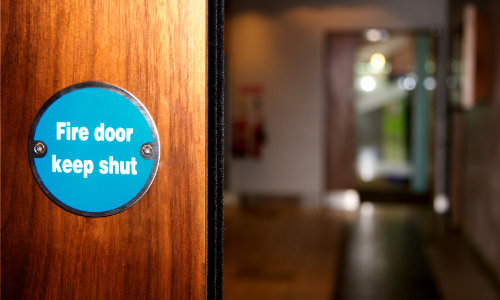
The Indispensable Role of Quality Fire Doors
Why are fire doors critical?
All active and passive fire protection measures are of the utmost importance in any facility but if a fire door isn’t providing an effective barrier for the spread of fire, protecting an escape route, occupants and users can be trapped, or the fire rescue services could be prevented from gaining access at the crucial time.
Fire doors form an integral part of fire prevention and containment strategy. They protect people and property.
The responsibility lies with accountable persons (APs) and responsible persons (RPs), which include facility managers, landlords, and service agents, to ensure fire doors meet strict compliance standards. It is their legal obligation to prevent fires from occurring and put measures in place to control them if they do happen.
Whether it's a timber FD30 or steel FD240, fire doors must be constructed to specific tolerances and tested rigorously. They are put in place not only to prevent fire from spreading but also to provide a safe escape route from a facility.
Now let’s break this down.
Containment and Compartmentalisation
Fire rated doors act as fire barriers that should confine a fire to its point of origin. This containment provides invaluable time for evacuation for a building’s users, whilst protecting the structural integrity of a building and the property within.
In 2021, the University of Leeds conducted research that noted timely intervention has a direct correlation with rescue fatality rates. If a fire is contained for as long as possible and remains in the vicinity of its origin, the intervention of the fire rescue services can be swift, focused, and effective.
Containing a fire is the aim then, but where is it being contained by fire doors and other passive fire measures?
Fire compartmentation is a strategy employed at the design stage of a building. A built environment is split into areas that will allow a fire to be contained within a limited space. They will have different fire resistance levels that factor in structural fire resistance, the purpose of the building, and the floor of the building.
Approved Document B (fire safety) underlines the role of compartments in containing fire, of which doors are a crucial component.
Section B3 8.30 notes: “Openings in a compartment wall common to two or more buildings, or between different occupancies in the same building, should be limited to those for either of the following.
a) A fire doorset providing a means of escape, which has the same fire resistance as the wall and is fitted in accordance with the provisions in Appendix C.
b) The passage of a pipe that complies with the provisions in Section 10.”
Fire risks are mitigated by these compartments, again facilitating swift and safe escape in a fire emergency, whilst simultaneously protecting the building and its assets.
As you can see above, the fire doorsets themselves are singled out as being a key factor in the means of escape, so let's get into it.

Escape Routes: A Matter of Life and Death
Quality fire doors safeguard escape routes, allowing for safe exit during emergencies. Installing fully certified doorsets ensures not just legal compliance but also resident safety.
Approved Document B, in addition to outlining requirements for compartmentation, also covers the requirements for escape routes, both horizontally and vertically out of a building.
Section B1 2.1 states: “The general principle is that any person confronted by a fire within a building can turn away from it and escape safely”.
But as with so many things, is it really that straightforward?
Due to building designs, changes in legislation over time, but also different interpretations of the regulations, and in some instances, complete ignorance of them, the provision of effective fire doors and escape routes is inconsistent at best.
We have all visited that hotel, restaurant, hospital, college, or retail outlet where a door doesn’t shut properly into the frame. Or a fire door is propped open with a door wedge, or even a fire extinguisher. This is where we see fire safety coming up against convenience and access requirements but also against substandard installation or maintenance issues.
Access and security versus ease of egress and user safety is a contentious topic in itself, with a balance to be struck with compliance and usability. What is, or certainly should be more straightforward is following the wealth of guidance covering compliant fire safety product solutions, their installation, and on-going maintenance.
Consistent Inspection and Maintenance
Under the Regulatory Reform (Fire Safety) Order 2005 (FSO), fire doors must be installed by qualified personnel. Regular inspections are mandatory and should align with building-specific fire risk assessments.
Where Regulation 10 checks apply, The Fire Safety (England) Regulations 2022: fire door guidance notes that checks “should be simple and basic” and don’t need a specialist to complete them. However, Articles 9 and 17 of the FSO still apply.
Home Office guidance assumes that suitable fire doors have been assessed in the first instance but with no regulation of the competency of installers, and no requirement for certified professionals to carry out routine checks, this is surely how the volume of FDIS-inspected not-fit-for-purpose fire doors have amassed.
BS 8214 states in 9.5.2 that “a typical gap to achieve good fire performance is between 2mm and 4mm” but we have all seen those pairs of fire rated doors when you can see light pouring through the meeting stiles, 10mm gaps you can get a hand through, never mind 3mm.
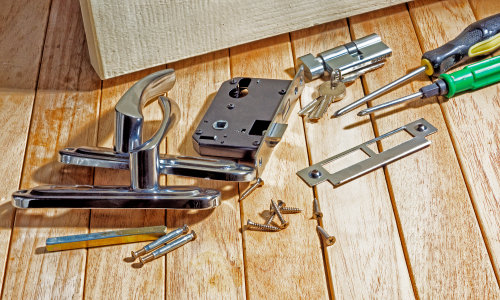
Why Gamble with Safety?
Installing sub-par fire doors isn't just a legal risk but a moral failing.
Fire rated doors safeguard lives, assets, and the building structure itself.
As we collectively press decision-makers for improved building safety measures, let's not lose sight of the essential role played by seemingly innocuous fire doors.
By choosing quality and compliance, we can all uphold not just industry standards but the value of human life itself.
Are you the responsible person conducting the regular maintenance checks, or responsible for the team or contractor who is? There are a variety of fire door safety checklists available for you to follow and inspection schemes in place to ensure your facility is compliant with all current regulations.
As an installer, are you sourcing CE marked and certified door hardware, or fitting the correct rating of compliant fire-tested doorsets into the fire walls?
If you’re a landlord or facilities manager, do the occupants of your building have correct and up to date information regarding fire exits, escape routes, and other fire safety measures in your building?
Let’s not wait for more in-depth or better policed legislation, or another tragedy like Grenfell before we individually step up and ensure fire safety measures are universally applied and upheld.
We can all play a part, in educating on fire safety, to design, manufacture, or supply life-saving fire safety products, installing and maintaining fire door ironmongery, to support and encourage more thorough and clear regulation, and to call out issues we see to those responsible people who can make the change.
Be part of that change today. Make a difference.
Join us at Door Controls Direct in supporting Fire Door Safety Week every September and throughout the year.






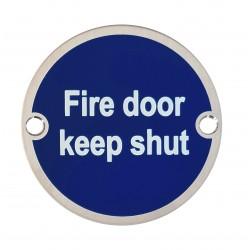
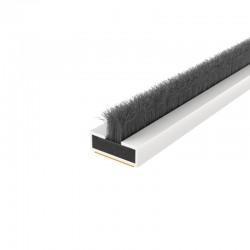

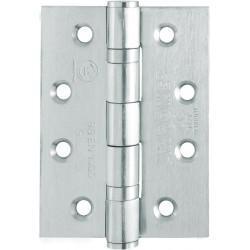

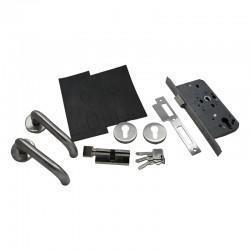

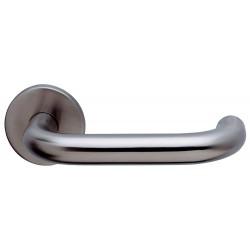
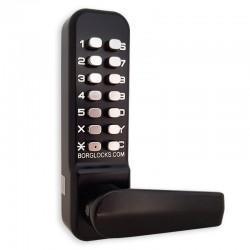




Comments